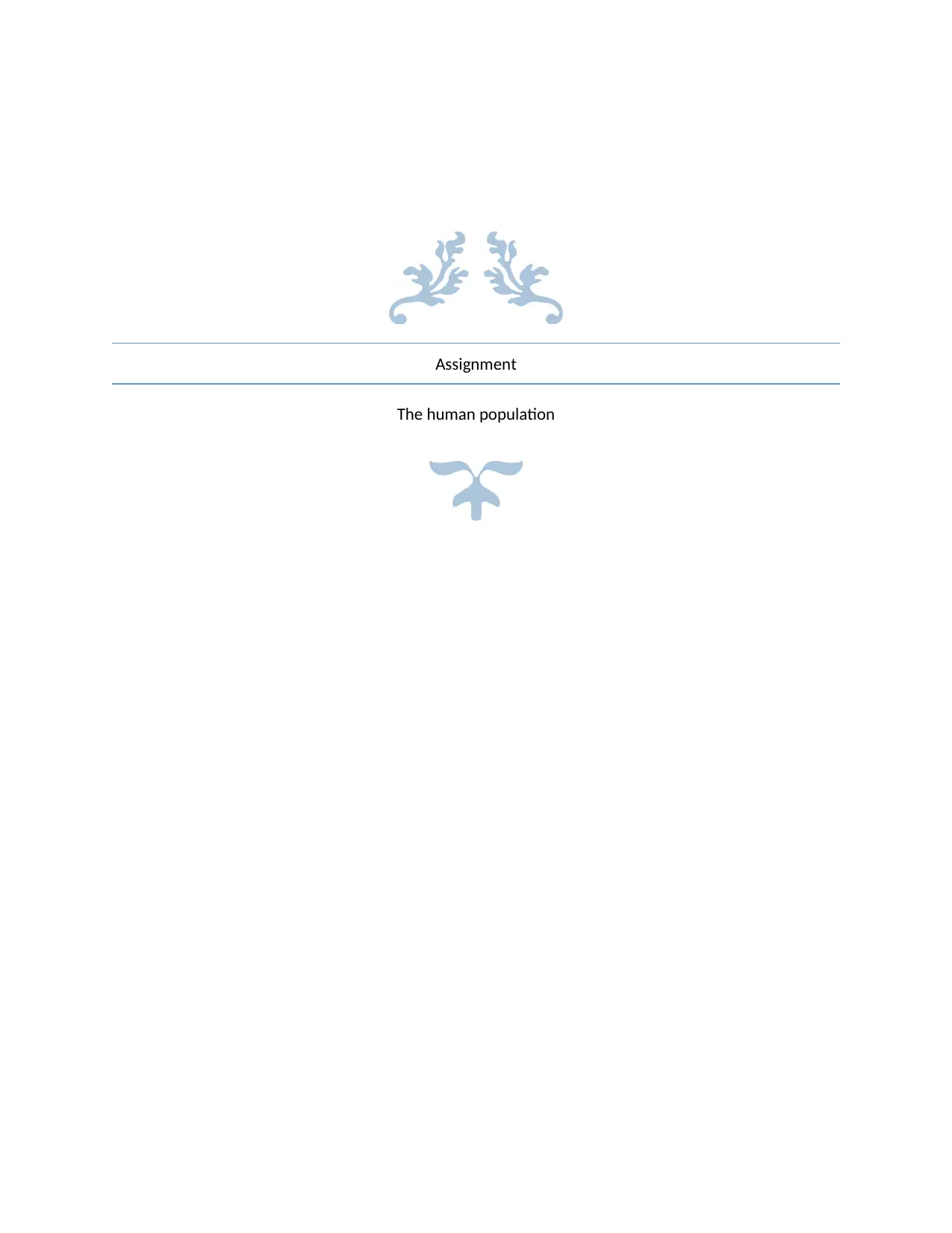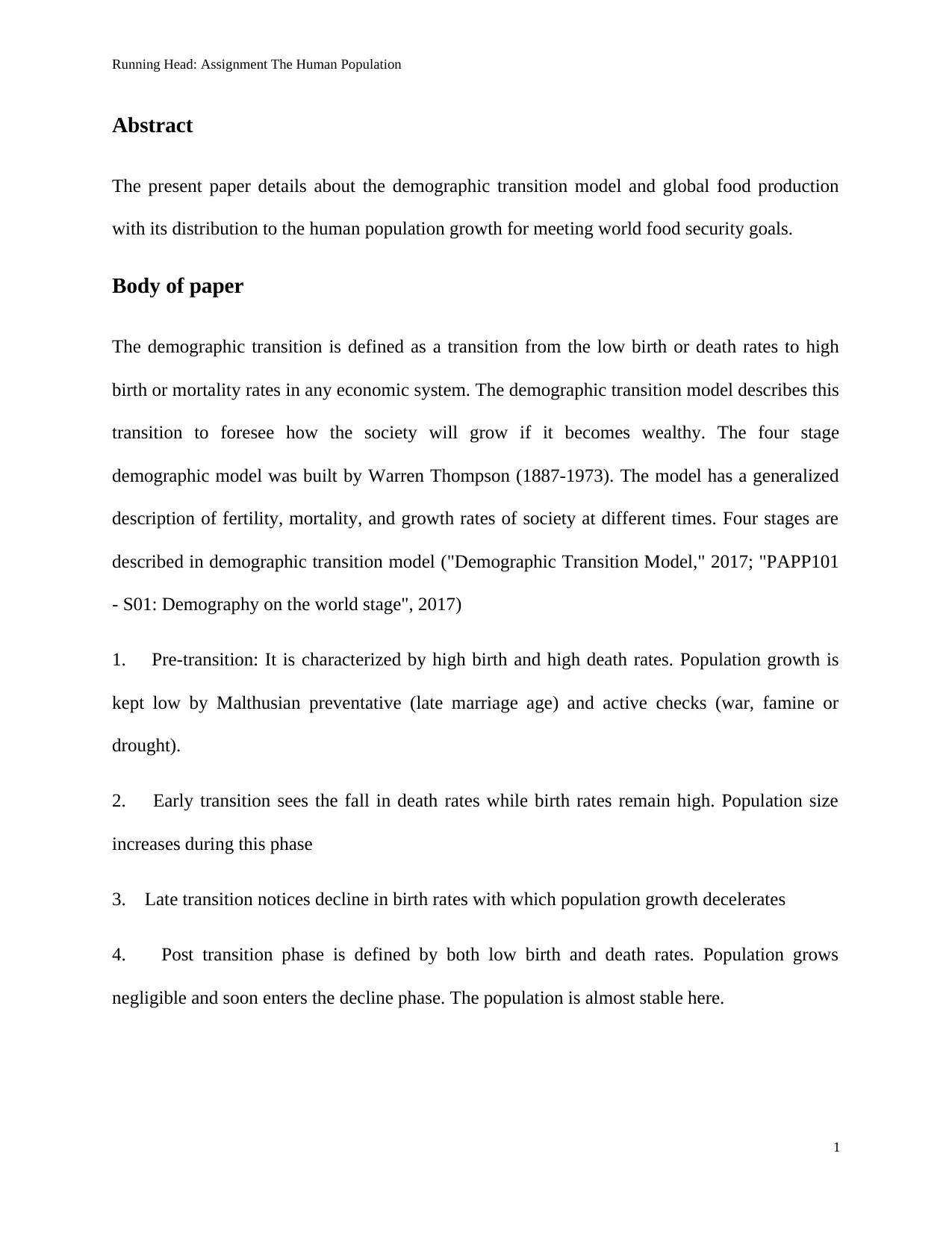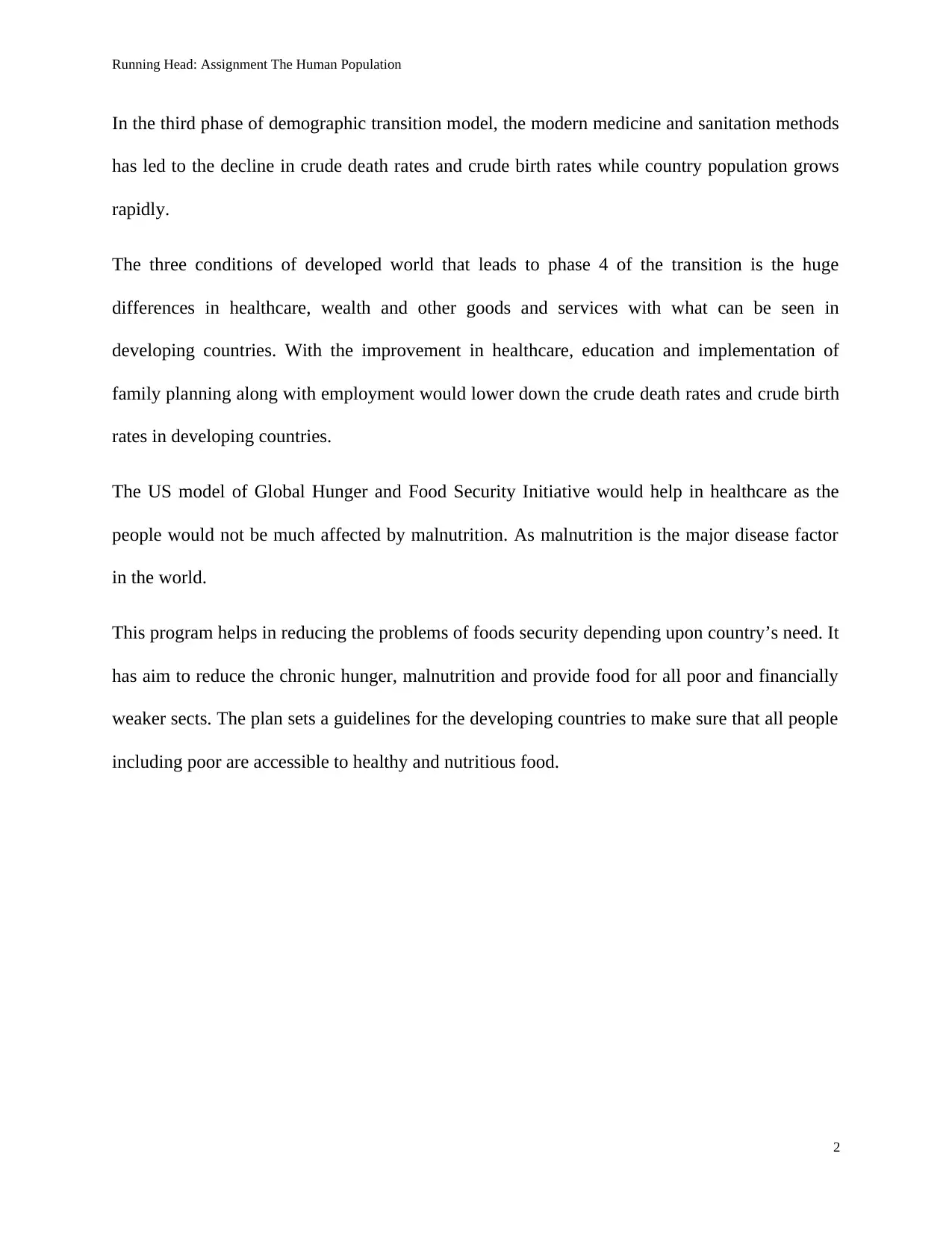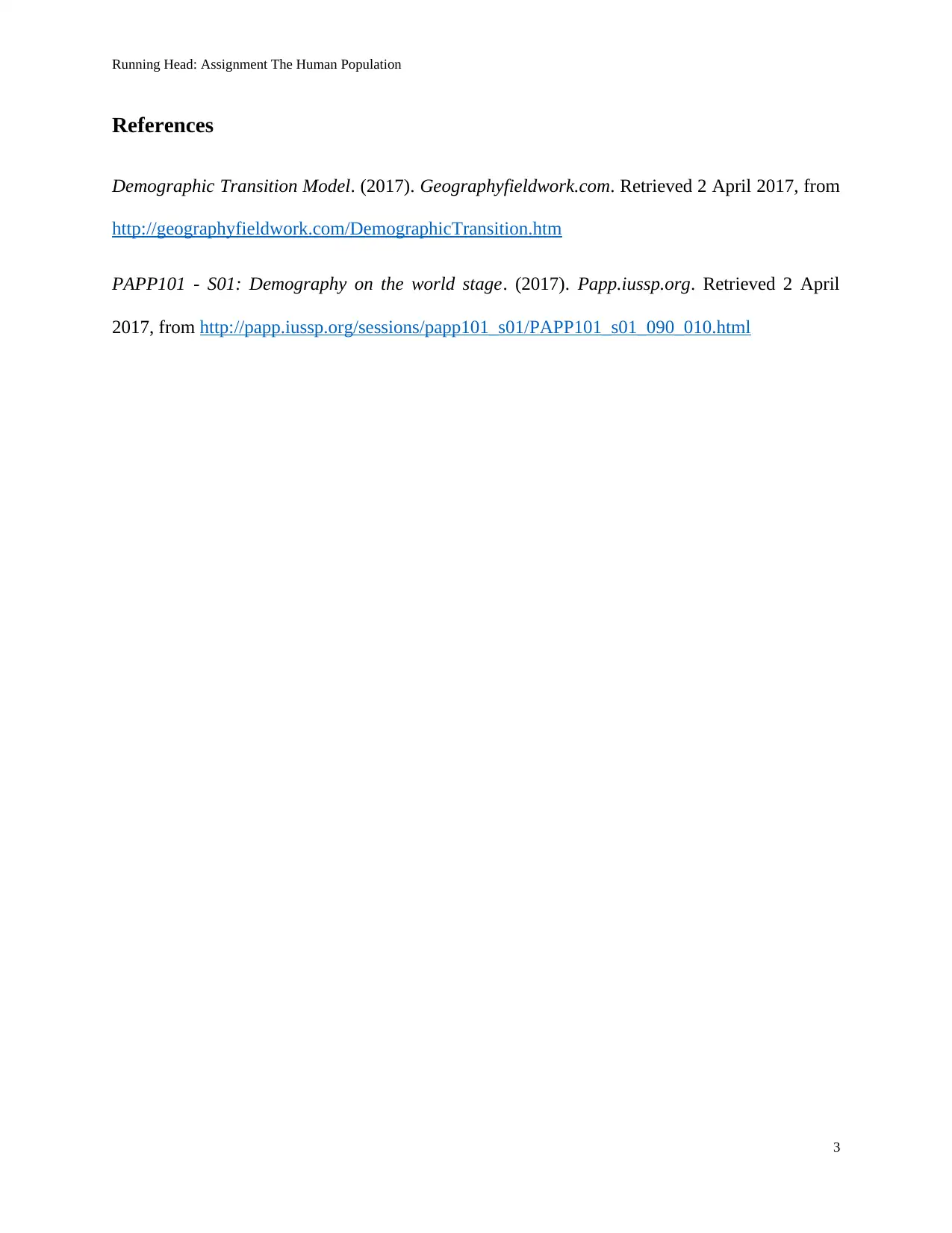Demographic Transition Model, Food Security, and Population Growth
VerifiedAdded on 2019/09/19
|4
|505
|191
Report
AI Summary
This report delves into the demographic transition model, outlining its stages and the factors influencing population growth. It discusses the model's impact on global food production and security, examining the interplay between birth and death rates, and economic systems. The report references the four-stage demographic transition model and explores how improvements in healthcare, education, and family planning can influence crude death and birth rates. Furthermore, it highlights the US model of Global Hunger and Food Security Initiative as a crucial program to address malnutrition and food security in developing countries, aiming to provide access to nutritious food for all, especially the poor and financially vulnerable. The report concludes by emphasizing the need for strategies to reduce hunger and ensure sustainable food systems in a rapidly changing world.
1 out of 4











![[object Object]](/_next/static/media/star-bottom.7253800d.svg)